UEFA Euro 2016 qualifying
The UEFA Euro 2016 qualifying tournament was a football competition that was played from September 2014 to November 2015 to determine the 23 UEFA member men's national teams joining the automatically qualified host team France in the UEFA Euro 2016 final tournament.[1][2]
 | |
| Tournament details | |
|---|---|
| Dates | 7 September 2014 – 17 November 2015 |
| Teams | 53 |
| Tournament statistics | |
| Matches played | 268 |
| Goals scored | 694 (2.59 per match)[note 1] |
| Attendance | 5,735,330 (21,400 per match) |
| Top scorer(s) | |
| UEFA European Qualifiers |
|---|
A total of 53 national teams participated in this qualifying process, with Gibraltar taking part for the first time. The draw took place at the Palais des Congrès Acropolis, Nice, on 23 February 2014.[3][4]
Qualified teams
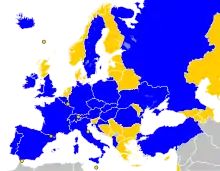
| Team | Qualified as | Qualified on | Previous appearances in tournament[upper-alpha 1] |
|---|---|---|---|
| Host | 28 May 2010 | 8 (1960, 1984, 1992, 1996, 2000, 2004, 2008, 2012) | |
| Group E winner | 5 September 2015 | 8 (1968, 1980, 1988, 1992, 1996, 2000, 2004, 2012) | |
| Group A winner | 6 September 2015 | 8 (1960, 1976, 1980, 1996, 2000, 2004, 2008, 2012) | |
| Group A runner-up | 6 September 2015 | 0 (debut) | |
| Group G winner | 8 September 2015 | 1 (2008) | |
| Group F winner | 8 October 2015 | 0 (debut) | |
| Group I winner | 8 October 2015 | 6 (1984, 1996, 2000, 2004, 2008, 2012) | |
| Group C winner | 9 October 2015 | 9 (1964, 1980, 1984, 1988, 1996, 2000, 2004, 2008, 2012) | |
| Group E runner-up | 9 October 2015 | 3 (1996, 2004, 2008) | |
| Group H winner | 10 October 2015 | 8 (1968, 1980, 1988, 1996, 2000, 2004, 2008, 2012) | |
| Group B winner | 10 October 2015 | 4 (1972, 1980, 1984, 2000) | |
| Group B runner-up | 10 October 2015 | 0 (debut) | |
| Group F runner-up | 11 October 2015 | 4 (1984, 1996, 2000, 2008) | |
| Group I runner-up | 11 October 2015 | 0 (debut) | |
| Group D winner | 11 October 2015 | 11 (1972, 1976, 1980, 1984, 1988, 1992, 1996, 2000, 2004, 2008, 2012) | |
| Group D runner-up | 11 October 2015 | 2 (2008, 2012) | |
| Group G runner-up | 12 October 2015 | 10 (1960, 1964, 1968, 1972, 1988, 1992, 1996, 2004, 2008, 2012) | |
| Group C runner-up | 12 October 2015 | 0 (debut) | |
| Group H runner-up | 13 October 2015 | 4 (1996, 2004, 2008, 2012) | |
| Best third-placed team | 13 October 2015 | 3 (1996, 2000, 2008) | |
| Play-off winner | 15 November 2015 | 2 (1964, 1972) | |
| Play-off winner | 16 November 2015 | 2 (1988, 2012) | |
| Play-off winner | 17 November 2015 | 5 (1992, 2000, 2004, 2008, 2012) | |
| Play-off winner | 17 November 2015 | 1 (2012) |
- Bold indicates champion for that year. Italic indicates host for that year.
- From 1960 to 1980, the Czech Republic competed as Czechoslovakia.
- From 1972 to 1988, Germany competed as West Germany.
- From 1960 to 1988, Russia competed as the Soviet Union, and in 1992 as CIS.
Format
All UEFA member associations were eligible to compete in the qualifying competition, with the host team France qualifying directly to the finals tournament.[1] The other 53 teams were drawn into eight groups of six teams (Groups A–H) and one group of five teams (Group I).[5] The group winners, runners-up, and the best third-placed team (with the results against the sixth-placed team discarded) directly qualified to the finals. The eight remaining third-placed teams contested two-legged play-offs to determine the last four qualifiers for the finals.[6][7][8]
Seeding system
Sides were seeded according to the UEFA national team coefficient rankings, which were announced along with the draw procedure and final tournament match schedule after the 23–24 January Executive Committee meeting in Nyon.[6] For the qualifying group stage, the teams were seeded into six pots (Pots 1–5 with 9 teams and Pot 6 with 8 teams) for the qualifying group stage draw according to the UEFA national team coefficient rankings, with the title holders (Spain) automatically seeded into Pot 1. Each nation's coefficient was generated by calculating:
- 40% of the average ranking points per game earned in the 2014 FIFA World Cup qualifying stage.
- 40% of the average ranking points per game earned in the UEFA Euro 2012 qualifying stage and final tournament.
- 20% of the average ranking points per game earned in the 2010 FIFA World Cup qualifying stage and final tournament.
UEFA stated that nations with the largest markets in terms of contribution to the European Qualifiers revenue would be drawn into one of the groups containing six teams.[8] They included England, Spain, Germany, Italy and the Netherlands.[5] UEFA also stated in their regulations that "the teams drawn into the group of five teams will have France added to their group for the purpose of playing centralised friendlies".[8]
For the play-offs the four ties were determined by draw, including the order of the two legs of each tie. The teams were seeded for the play-off draw according to the UEFA national team coefficient rankings updated after the completion of the group stage. Each nation's coefficient was generated by calculating:
- 40% of the average ranking points per game earned in the UEFA Euro 2016 qualifying group stage.
- 40% of the average ranking points per game earned in the 2014 FIFA World Cup qualifying stage and final tournament.
- 20% of the average ranking points per game earned in the UEFA Euro 2012 qualifying stage and final tournament.
Tiebreakers
If two or more teams were equal on points on completion of the group matches, the following tie-breaking criteria were applied:[8]
- Higher number of points obtained in the matches played among the teams in question;
- Superior goal difference in matches played among the teams in question;
- Higher number of goals scored in the matches played among the teams in question;
- Higher number of goals scored away from home in the matches played among the teams in question;
- If, after having applied criteria 1 to 4, teams still had an equal ranking, criteria 1 to 4 were reapplied exclusively to the matches between the teams in question to determine their final rankings.[lower-alpha 1] If this procedure did not lead to a decision, criteria 6 to 10 applied;
- Superior goal difference in all group matches;
- Higher number of goals scored in all group matches;
- Higher number of away goals scored in all group matches;
- Fair play conduct in all group matches (1 point for a single yellow card, 3 points for a red card as a consequence of two yellow cards, 3 points for a direct red card, 4 points for a yellow card followed by a direct red card);
- Position in the UEFA national team coefficient ranking system;
To determine the best third-placed team, the results against the teams in sixth place were discarded. The following criteria were applied:
- Higher number of points obtained;
- Superior goal difference;
- Higher number of goals scored;
- Higher number of away goals scored;
- Fair play conduct in all group matches;
- Position in the UEFA national team coefficient ranking system;
For each play-off tie, the team that scored more goals on aggregate over the two legs qualified for the final tournament. If the aggregate score was level, the away goals rule was applied, i.e., the team that scored more goals away from home over the two legs advanced. If away goals were also equal, then thirty minutes of extra time was played, divided into two fifteen-minutes halves. The away goals rule was again applied after extra time, i.e., if there were goals scored during extra time and the aggregate score was still level, the visiting team advanced by virtue of more away goals scored. If no goals were scored during extra time, the tie was decided by penalty shoot-out.
- Notes
- When there were two or more teams tied in points, criteria 1 to 4 were applied. After these criteria were applied, they could define the position of some of the teams involved, but not all of them. For example, if there was a three-way tie on points, the application of the first four criteria could only break the tie for one of the teams, leaving the other two teams still tied. In this case, the tiebreaking procedure was resumed, from the beginning, for those teams that were still tied.
Schedule
.jpg.webp)
This was the first qualifying tournament after UEFA announced centralised rights deals for both UEFA Euro and FIFA World Cup qualifying. UEFA had proposed the "Week of Football" concept for the scheduling of qualifying matches:[9]
- Matches took place from Thursday to Tuesday.
- Kick-off times were largely set at 18:00 and 20:45 CET on Saturdays and Sundays, and 20:45 CET on Thursdays, Fridays, Mondays and Tuesdays.
- On double-header matchweeks, teams played on Thursday and Sunday, or Friday and Monday, or Saturday and Tuesday.
- Matches in the same group were played on the same day.[8]
There were ten matchdays for the qualifying group stage, and two matchdays for the play-offs:[6]
| Stage | Matchday | Dates |
|---|---|---|
| Qualifying group stage | Matchday 1 | 7–9 September 2014 |
| Matchday 2 | 9–11 October 2014 | |
| Matchday 3 | 12–14 October 2014 | |
| Matchday 4 | 14–16 November 2014 | |
| Matchday 5 | 27–29 March 2015 | |
| Matchday 6 | 12–14 June 2015 | |
| Matchday 7 | 3–5 September 2015 | |
| Matchday 8 | 6–8 September 2015 | |
| Matchday 9 | 8–10 October 2015 | |
| Matchday 10 | 11–13 October 2015 | |
| Play-offs | 1st leg | 12–14 November 2015 |
| 2nd leg | 15–17 November 2015 |
Unlike previous qualifying campaigns where group fixtures were determined by negotiation between the national federations, UEFA themselves decided each group's fixture list, released the same day as the draw.[5][8]
Draw
The draw took place at the Palais des Congrès Acropolis, Nice, on 23 February 2014, 12:00 CET. Groups A–H each contain one team from each of Pots 1–6, while Group I contains one team from each of Pots 1–5. For television rights reasons, England, Germany, Italy, Spain and the Netherlands were drawn into groups of six teams. Before the draw UEFA confirmed that, for political reasons, Armenia would not be drawn against Azerbaijan (due to the dispute concerning territory of Nagorno-Karabakh) and Gibraltar would not be drawn against Spain (due to the disputed status of Gibraltar). France (Coeff: 30,992; Rank: 11) were partnered with the five-team Group I, which enabled the 2016 tournament hosts to play friendlies against these countries on their 'spare' dates. These friendlies did not count in the qualifying group standings.[10]
Seeding
The seeding pots were announced on 24 January 2014.[11][12] Teams in bold qualified for the finals.
|
|
| ||||||||||||||||||||||||||||||||||||||||||||||||||||||||||||||||||||||||||||||||||||||||||
|
|
|
Summary
Groups
Group A
| Pos | Team | Pld | W | D | L | GF | GA | GD | Pts | Qualification | |||||||
|---|---|---|---|---|---|---|---|---|---|---|---|---|---|---|---|---|---|
| 1 | 10 | 7 | 1 | 2 | 19 | 14 | +5 | 22 | Qualify for final tournament | — | 2–1 | 0–2 | 2–1 | 2–1 | 1–1 | ||
| 2 | 10 | 6 | 2 | 2 | 17 | 6 | +11 | 20 | 2–1 | — | 3–0 | 2–0 | 0–0 | 2–2 | |||
| 3 | 10 | 5 | 3 | 2 | 14 | 9 | +5 | 18 | 1–2 | 1–0 | — | 3–0 | 3–1 | 1–1 | |||
| 4 | 10 | 4 | 1 | 5 | 17 | 14 | +3 | 13 | 2–3 | 0–1 | 1–1 | — | 3–1 | 6–0 | |||
| 5 | 10 | 1 | 2 | 7 | 7 | 18 | −11 | 5[lower-alpha 1] | 2–4 | 0–3 | 0–1 | 1–2 | — | 0–0 | |||
| 6 | 10 | 0 | 5 | 5 | 6 | 19 | −13 | 5[lower-alpha 1] | 1–2 | 0–3 | 1–1 | 0–2 | 0–1 | — |
Notes:
- Head-to-head points: Kazakhstan 4, Latvia 1.
Group B
| Pos | Team | Pld | W | D | L | GF | GA | GD | Pts | Qualification | |||||||
|---|---|---|---|---|---|---|---|---|---|---|---|---|---|---|---|---|---|
| 1 | 10 | 7 | 2 | 1 | 24 | 5 | +19 | 23 | Qualify for final tournament | — | 0–0 | 3–1 | 3–1 | 5–0 | 6–0 | ||
| 2 | 10 | 6 | 3 | 1 | 11 | 4 | +7 | 21 | 1–0 | — | 0–0 | 0–0 | 2–1 | 2–0 | |||
| 3 | 10 | 5 | 2 | 3 | 17 | 12 | +5 | 17 | Advance to play-offs | 1–1 | 2–0 | — | 3–1 | 1–2 | 3–0 | ||
| 4 | 10 | 4 | 1 | 5 | 16 | 14 | +2 | 13 | 0–1 | 0–3 | 3–0 | — | 1–2 | 4–0 | |||
| 5 | 10 | 4 | 0 | 6 | 16 | 17 | −1 | 12 | 0–1 | 0–1 | 2–3 | 1–2 | — | 5–0 | |||
| 6 | 10 | 0 | 0 | 10 | 4 | 36 | −32 | 0 | 1–4 | 1–2 | 0–3 | 1–4 | 1–3 | — |
Group C
| Pos | Team | Pld | W | D | L | GF | GA | GD | Pts | Qualification | |||||||
|---|---|---|---|---|---|---|---|---|---|---|---|---|---|---|---|---|---|
| 1 | 10 | 9 | 0 | 1 | 23 | 3 | +20 | 27 | Qualify for final tournament | — | 2–0 | 1–0 | 3–0 | 4–0 | 5–1 | ||
| 2 | 10 | 7 | 1 | 2 | 17 | 8 | +9 | 22 | 2–1 | — | 0–0 | 0–1 | 3–0 | 2–1 | |||
| 3 | 10 | 6 | 1 | 3 | 14 | 4 | +10 | 19 | Advance to play-offs | 0–1 | 0–1 | — | 3–1 | 3–0 | 1–0 | ||
| 4 | 10 | 3 | 2 | 5 | 8 | 14 | −6 | 11 | 0–1 | 1–3 | 0–2 | — | 2–0 | 0–0 | |||
| 5 | 10 | 1 | 1 | 8 | 6 | 27 | −21 | 4[lower-alpha 1] | 0–4 | 2–4 | 0–3 | 1–1 | — | 1–0 | |||
| 6 | 10 | 1 | 1 | 8 | 6 | 18 | −12 | 4[lower-alpha 1] | 0–1 | 0–2 | 0–2 | 1–2 | 3–2 | — |
Notes:
- Tied on head-to-head points (3) and head-to-head goal difference (0). Head-to-head away goals: Luxembourg 2, Macedonia 0.
Group D
| Pos | Team | Pld | W | D | L | GF | GA | GD | Pts | Qualification | |||||||
|---|---|---|---|---|---|---|---|---|---|---|---|---|---|---|---|---|---|
| 1 | 10 | 7 | 1 | 2 | 24 | 9 | +15 | 22 | Qualify for final tournament | — | 3–1 | 1–1 | 2–1 | 2–1 | 4–0 | ||
| 2 | 10 | 6 | 3 | 1 | 33 | 10 | +23 | 21 | 2–0 | — | 2–1 | 2–2 | 4–0 | 8–1 | |||
| 3 | 10 | 5 | 3 | 2 | 19 | 7 | +12 | 18 | Advance to play-offs | 1–0 | 1–1 | — | 1–1 | 1–0 | 7–0 | ||
| 4 | 10 | 4 | 3 | 3 | 22 | 12 | +10 | 15 | 2–3 | 2–2 | 1–0 | — | 1–0 | 6–1 | |||
| 5 | 10 | 3 | 0 | 7 | 10 | 16 | −6 | 9 | 0–2 | 0–4 | 1–2 | 1–0 | — | 4–0 | |||
| 6 | 10 | 0 | 0 | 10 | 2 | 56 | −54 | 0 | 0–7 | 0–7 | 0–4 | 0–6 | 0–3 | — |
Group E
| Pos | Team | Pld | W | D | L | GF | GA | GD | Pts | Qualification | |||||||
|---|---|---|---|---|---|---|---|---|---|---|---|---|---|---|---|---|---|
| 1 | 10 | 10 | 0 | 0 | 31 | 3 | +28 | 30 | Qualify for final tournament | — | 2–0 | 3–1 | 2–0 | 4–0 | 5–0 | ||
| 2 | 10 | 7 | 0 | 3 | 24 | 8 | +16 | 21 | 0–2 | — | 3–2 | 3–0 | 4–0 | 7–0 | |||
| 3 | 10 | 5 | 1 | 4 | 18 | 11 | +7 | 16 | Advance to play-offs | 2–3 | 1–0 | — | 1–0 | 1–1 | 6–0 | ||
| 4 | 10 | 3 | 1 | 6 | 4 | 9 | −5 | 10[lower-alpha 1] | 0–1 | 0–1 | 1–0 | — | 1–0 | 2–0 | |||
| 5 | 10 | 3 | 1 | 6 | 7 | 18 | −11 | 10[lower-alpha 1] | 0–3 | 1–2 | 0–2 | 1–0 | — | 2–1 | |||
| 6 | 10 | 0 | 1 | 9 | 1 | 36 | −35 | 1 | 0–6 | 0–4 | 0–2 | 0–0 | 0–2 | — |
Notes:
- Tied on head-to-head results. Overall goal difference was used as the tiebreaker.
Group F
| Pos | Team | Pld | W | D | L | GF | GA | GD | Pts | Qualification | |||||||
|---|---|---|---|---|---|---|---|---|---|---|---|---|---|---|---|---|---|
| 1 | 10 | 6 | 3 | 1 | 16 | 8 | +8 | 21 | Qualify for final tournament | — | 0–0 | 1–1 | 2–1 | 2–0 | 3–1 | ||
| 2 | 10 | 5 | 5 | 0 | 11 | 2 | +9 | 20 | 2–0 | — | 1–1 | 1–1 | 1–0 | 0–0 | |||
| 3 | 10 | 4 | 4 | 2 | 11 | 9 | +2 | 16 | Advance to play-offs | 1–2 | 0–0 | — | 1–0 | 2–1 | 0–0 | ||
| 4 | 10 | 3 | 3 | 4 | 9 | 10 | −1 | 12 | 1–1 | 0–2 | 0–1 | — | 1–0 | 1–1 | |||
| 5 | 10 | 2 | 0 | 8 | 6 | 17 | −11 | 6[lower-alpha 1] | 1–3 | 0–3 | 0–1 | 1–3 | — | 2–1 | |||
| 6 | 10 | 1 | 3 | 6 | 7 | 14 | −7 | 6[lower-alpha 1] | 0–2 | 0–1 | 4–3 | 0–1 | 0–1 | — |
Notes:
- Head-to-head points: Faroe Islands 6, Greece 0.
Group G
| Pos | Team | Pld | W | D | L | GF | GA | GD | Pts | Qualification | |||||||
|---|---|---|---|---|---|---|---|---|---|---|---|---|---|---|---|---|---|
| 1 | 10 | 9 | 1 | 0 | 22 | 5 | +17 | 28 | Qualify for final tournament | — | 1–0 | 1–1 | 1–0 | 3–0 | 1–0 | ||
| 2 | 10 | 6 | 2 | 2 | 21 | 5 | +16 | 20 | 0–1 | — | 1–0 | 2–0 | 4–0 | 1–1 | |||
| 3 | 10 | 5 | 3 | 2 | 15 | 9 | +6 | 18 | Advance to play-offs | 1–4 | 1–1 | — | 3–1 | 2–0 | 2–0 | ||
| 4 | 10 | 3 | 2 | 5 | 10 | 13 | −3 | 11 | 2–3 | 0–3[lower-alpha 1] | 1–1 | — | 2–0 | 2–0 | |||
| 5 | 10 | 1 | 2 | 7 | 2 | 26 | −24 | 5 | 0–5 | 0–7 | 0–2 | 0–0 | — | 1–1 | |||
| 6 | 10 | 0 | 2 | 8 | 4 | 16 | −12 | 2 | 1–2 | 1–2 | 0–2 | 0–2 | 0–1 | — |
Notes:
- The Montenegro v Russia match was awarded as a 3–0 win to Russia after being abandoned at 0–0 due to crowd violence and a scuffle between players.
Group H
| Pos | Team | Pld | W | D | L | GF | GA | GD | Pts | Qualification | |||||||
|---|---|---|---|---|---|---|---|---|---|---|---|---|---|---|---|---|---|
| 1 | 10 | 7 | 3 | 0 | 16 | 7 | +9 | 24 | Qualify for final tournament | — | 1–1 | 2–1 | 1–0 | 2–1 | 1–0 | ||
| 2 | 10 | 6 | 3 | 1 | 20 | 5 | +15 | 20 | 1–1 | — | 5–1 | 3–0 | 6–0 | 2–0 | |||
| 3 | 10 | 6 | 1 | 3 | 13 | 10 | +3 | 19 | Advance to play-offs | 0–2 | 2–0 | — | 2–1 | 0–0 | 2–0 | ||
| 4 | 10 | 3 | 2 | 5 | 9 | 12 | −3 | 11 | 2–2 | 0–1 | 0–1 | — | 2–0 | 1–1 | |||
| 5 | 10 | 1 | 3 | 6 | 7 | 18 | −11 | 6 | 1–3 | 0–0 | 0–1 | 1–2 | — | 2–0 | |||
| 6 | 10 | 0 | 2 | 8 | 3 | 16 | −13 | 2 | 0–1 | 0–1 | 0–3 | 0–1 | 2–2 | — |
Notes:
- Croatia were deducted one point after charges for racist behaviour in the home match against Italy.
Group I
| Pos | Team | Pld | W | D | L | GF | GA | GD | Pts | Qualification | ||||||
|---|---|---|---|---|---|---|---|---|---|---|---|---|---|---|---|---|
| 1 | 8 | 7 | 0 | 1 | 11 | 5 | +6 | 21 | Qualify for final tournament | — | 0–1 | 1–0 | 2–1 | 1–0 | ||
| 2 | 8 | 4 | 2 | 2 | 10 | 5 | +5 | 14 | 0–1 | — | 1–1 | 0–2 | 2–1 | |||
| 3 | 8 | 3 | 3 | 2 | 8 | 5 | +3 | 12 | Advance to play-offs | 0–1 | 0–0 | — | 2–0 | 2–1 | ||
| 4 | 8 | 2 | 1 | 5 | 8 | 13 | −5 | 4 | 1–2 | 0–3[lower-alpha 1] | 1–3 | — | 2–0 | |||
| 5 | 8 | 0 | 2 | 6 | 5 | 14 | −9 | 2 | 2–3 | 0–3 | 0–0 | 1–1 | — |
Notes:
- The Serbia v Albania match was awarded as a 3–0 win to Albania, and Serbia were also deducted three points, after the match was abandoned at 0–0 because home fans invaded the pitch and attacked Albania players when a drone carried a pro-Albanian flag over the stadium.
Ranking of third-placed teams
The highest ranked third-placed team from the groups directly qualified for the tournament, while the remainder entered the play-offs. As Group I contained five teams and the rest contained six, matches against any sixth-placed team in each group were not included in this ranking. As a result, a total of eight matches played by each team count toward the purpose of the third-placed ranking table.
Turkey became the best third-placed team, after winning against Iceland in its last match, while at the same time Kazakhstan beat Latvia to finish fifth in Group A.[13]
| Pos | Grp | Team | Pld | W | D | L | GF | GA | GD | Pts | Qualification |
|---|---|---|---|---|---|---|---|---|---|---|---|
| 1 | A | 8 | 5 | 1 | 2 | 12 | 7 | +5 | 16 | Qualify for final tournament | |
| 2 | F | 8 | 4 | 3 | 1 | 8 | 5 | +3 | 15 | Advance to play-offs | |
| 3 | C | 8 | 4 | 1 | 3 | 11 | 4 | +7 | 13 | ||
| 4 | H | 8 | 4 | 1 | 3 | 8 | 10 | −2 | 13 | ||
| 5 | I | 8 | 3 | 3 | 2 | 8 | 5 | +3 | 12 | ||
| 6 | G | 8 | 3 | 3 | 2 | 11 | 9 | +2 | 12 | ||
| 7 | D | 8 | 3 | 3 | 2 | 8 | 7 | +1 | 12 | ||
| 8 | B | 8 | 3 | 2 | 3 | 11 | 12 | −1 | 11 | ||
| 9 | E | 8 | 3 | 1 | 4 | 10 | 11 | −1 | 10 |
Rules for classification: 1) Points from matches against teams ranked first to fifth in the group; 2) Superior goal difference from these matches; 3) Higher number of goals scored in these matches; 4) Higher number of away goals scored in these matches; 5) Fair play ranking in these matches; 6) Position in the UEFA national team coefficient ranking system; 7) Drawing of lots.
Play-offs
The eight remaining third-placed teams contested two-legged play-offs to determine the last four qualifiers for the finals. The teams were seeded for the play-off draw according to the UEFA national team coefficient rankings updated after the completion of the qualifying group stage. The draw for the play-offs was held on 18 October 2015, 11:20 CEST, at the UEFA headquarters in Nyon.[14][15]
Seedings
The seedings were as follows:[16][17]
|
|
Matches
The first legs were played on 12–14 November, and the second legs were played on 15–17 November 2015. The four play-off winners (Ukraine, Sweden, Republic of Ireland and Hungary) qualified for the final tournament.
| Team 1 | Agg. | Team 2 | 1st leg | 2nd leg |
|---|---|---|---|---|
| Ukraine |
3–1 | 2–0 | 1–1 | |
| Sweden |
4–3 | 2–1 | 2–2 | |
| Bosnia and Herzegovina |
1–3 | 1–1 | 0–2 | |
| Norway |
1–3 | 0–1 | 1–2 |
Goalscorers

There were 694 goals scored in 268 matches, for an average of 2.59 goals per match.[note 1]
13 goals
11 goals
9 goals
8 goals
7 goals
6 goals
5 goals
4 goals
3 goals
 Ildefons Lima
Ildefons Lima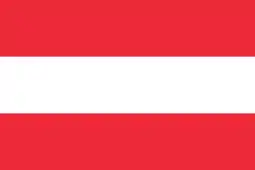 Marko Arnautović
Marko Arnautović Martin Harnik
Martin Harnik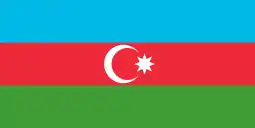 Dimitrij Nazarov
Dimitrij Nazarov.svg.png.webp) Dries Mertens
Dries Mertens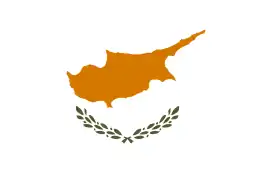 Demetris Christofi
Demetris Christofi Georgios Efrem
Georgios Efrem Harry Kane
Harry Kane Theo Walcott
Theo Walcott Joel Pohjanpalo
Joel Pohjanpalo Tornike Okriashvili
Tornike Okriashvili Mario Götze
Mario Götze Max Kruse
Max Kruse André Schürrle
André Schürrle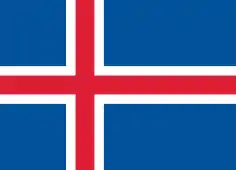 Kolbeinn Sigþórsson
Kolbeinn Sigþórsson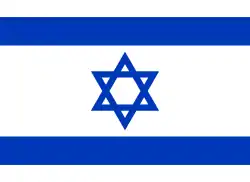 Tomer Hemed
Tomer Hemed Graziano Pellè
Graziano Pellè Yuriy Logvinenko
Yuriy Logvinenko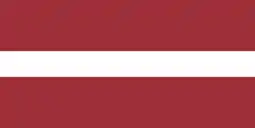 Valērijs Šabala
Valērijs Šabala Robin van Persie
Robin van Persie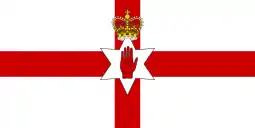 Gareth McAuley
Gareth McAuley Alexander Tettey
Alexander Tettey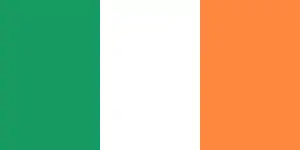 Shane Long
Shane Long Aleksandr Kokorin
Aleksandr Kokorin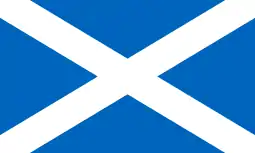 Steven Naismith
Steven Naismith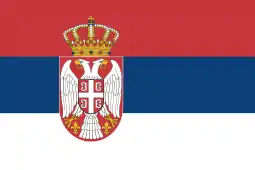 Zoran Tošić
Zoran Tošić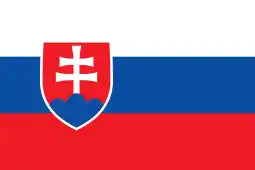 Adam Nemec
Adam Nemec Boštjan Cesar
Boštjan Cesar David Silva
David Silva Erkan Zengin
Erkan Zengin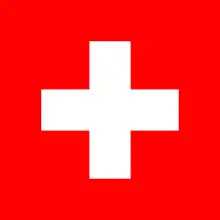 Josip Drmić
Josip Drmić Haris Seferović
Haris Seferović Selçuk İnan
Selçuk İnan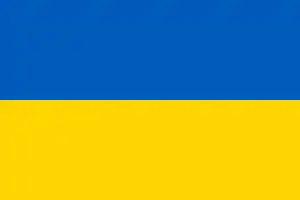 Artem Kravets
Artem Kravets
2 goals
 Zlatko Junuzović
Zlatko Junuzović Rubin Okotie
Rubin Okotie Rahid Amirguliyev
Rahid Amirguliyev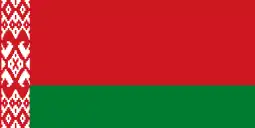 Stanislaw Drahun
Stanislaw Drahun Mikhail Gordeichuk
Mikhail Gordeichuk Timofei Kalachev
Timofei Kalachev Sergei Kornilenko
Sergei Kornilenko.svg.png.webp) Radja Nainggolan
Radja Nainggolan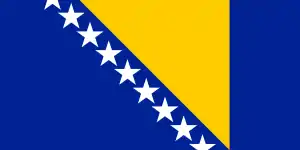 Milan Đurić
Milan Đurić Vedad Ibišević
Vedad Ibišević Haris Medunjanin
Haris Medunjanin Edin Višća
Edin Višća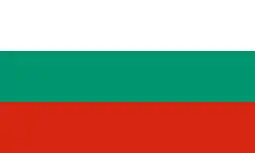 Iliyan Mitsanski
Iliyan Mitsanski Ivelin Popov
Ivelin Popov Marcelo Brozović
Marcelo Brozović Andrej Kramarić
Andrej Kramarić Luka Modrić
Luka Modrić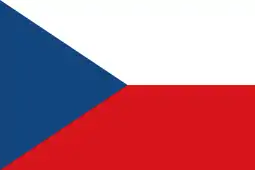 Pavel Kadeřábek
Pavel Kadeřábek Václav Pilař
Václav Pilař Milan Škoda
Milan Škoda Nicklas Bendtner
Nicklas Bendtner Yussuf Poulsen
Yussuf Poulsen Ross Barkley
Ross Barkley Raheem Sterling
Raheem Sterling Jack Wilshere
Jack Wilshere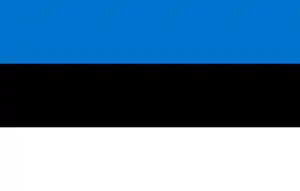 Sergei Zenjov
Sergei Zenjov Jóan Símun Edmundsson
Jóan Símun Edmundsson Riku Riski
Riku Riski Jaba Kankava
Jaba Kankava Valeri Qazaishvili
Valeri Qazaishvili Mate Vatsadze
Mate Vatsadze İlkay Gündoğan
İlkay Gündoğan Dániel Böde
Dániel Böde Krisztián Németh
Krisztián Németh Tamás Priskin
Tamás Priskin Birkir Bjarnason
Birkir Bjarnason Aron Gunnarsson
Aron Gunnarsson Tal Ben Haim II
Tal Ben Haim II Nir Bitton
Nir Bitton Eran Zahavi
Eran Zahavi Antonio Candreva
Antonio Candreva Giorgio Chiellini
Giorgio Chiellini Éder
Éder Islambek Kuat
Islambek Kuat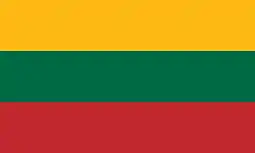 Fedor Černych
Fedor Černych Arvydas Novikovas
Arvydas Novikovas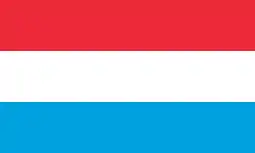 Lars Krogh Gerson
Lars Krogh Gerson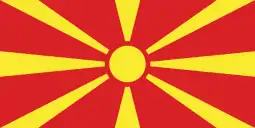 Aleksandar Trajkovski
Aleksandar Trajkovski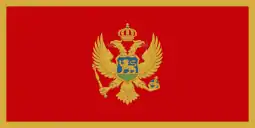 Fatos Bećiraj
Fatos Bećiraj Stevan Jovetić
Stevan Jovetić Mirko Vučinić
Mirko Vučinić Arjen Robben
Arjen Robben Georginio Wijnaldum
Georginio Wijnaldum Steven Davis
Steven Davis Joshua King
Joshua King Grzegorz Krychowiak
Grzegorz Krychowiak Sebastian Mila
Sebastian Mila João Moutinho
João Moutinho James McClean
James McClean Aiden McGeady
Aiden McGeady Constantin Budescu
Constantin Budescu Paul Papp
Paul Papp Bogdan Stancu
Bogdan Stancu Adem Ljajić
Adem Ljajić Juraj Kucka
Juraj Kucka Róbert Mak
Róbert Mak Nejc Pečnik
Nejc Pečnik Sergio Busquets
Sergio Busquets Santi Cazorla
Santi Cazorla Pedro
Pedro Marcus Berg
Marcus Berg Fabian Schär
Fabian Schär Arda Turan
Arda Turan Yevhen Konoplyanka
Yevhen Konoplyanka Yevhen Seleznyov
Yevhen Seleznyov Serhiy Sydorchuk
Serhiy Sydorchuk.svg.png.webp) Aaron Ramsey
Aaron Ramsey
1 goal
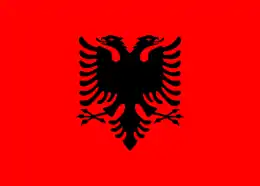 Bekim Balaj
Bekim Balaj Berat Djimsiti
Berat Djimsiti Shkëlzen Gashi
Shkëlzen Gashi Ermir Lenjani
Ermir Lenjani Mërgim Mavraj
Mërgim Mavraj Armando Sadiku
Armando Sadiku Robert Arzumanyan
Robert Arzumanyan Henrikh Mkhitaryan
Henrikh Mkhitaryan Hrayr Mkoyan
Hrayr Mkoyan Marcos Pizzelli
Marcos Pizzelli Marcel Sabitzer
Marcel Sabitzer Javid Huseynov
Javid Huseynov.svg.png.webp) Michy Batshuayi
Michy Batshuayi.svg.png.webp) Christian Benteke
Christian Benteke.svg.png.webp) Nacer Chadli
Nacer Chadli.svg.png.webp) Laurent Depoitre
Laurent Depoitre.svg.png.webp) Divock Origi
Divock Origi Ermin Bičakčić
Ermin Bičakčić Senad Lulić
Senad Lulić Mihail Aleksandrov
Mihail Aleksandrov Nikolay Bodurov
Nikolay Bodurov Andrey Galabinov
Andrey Galabinov Ventsislav Hristov
Ventsislav Hristov Dimitar Rangelov
Dimitar Rangelov Nikola Kalinić
Nikola Kalinić Mario Mandžukić
Mario Mandžukić Ivica Olić
Ivica Olić Danijel Pranjić
Danijel Pranjić Ivan Rakitić
Ivan Rakitić Gordon Schildenfeld
Gordon Schildenfeld Constantinos Charalambidis
Constantinos Charalambidis Jason Demetriou
Jason Demetriou Dossa Júnior
Dossa Júnior Vincent Laban
Vincent Laban Constantinos Makrides
Constantinos Makrides Giorgos Merkis
Giorgos Merkis Vladimír Darida
Vladimír Darida Ladislav Krejčí
Ladislav Krejčí David Lafata
David Lafata David Limberský
David Limberský Tomáš Necid
Tomáš Necid Tomáš Sivok
Tomáš Sivok Josef Šural
Josef Šural Pierre-Emile Højbjerg
Pierre-Emile Højbjerg Nicolai Jørgensen
Nicolai Jørgensen Thomas Kahlenberg
Thomas Kahlenberg Simon Kjær
Simon Kjær Jakob Poulsen
Jakob Poulsen Jannik Vestergaard
Jannik Vestergaard Lasse Vibe
Lasse Vibe Phil Jagielka
Phil Jagielka Alex Oxlade-Chamberlain
Alex Oxlade-Chamberlain Andros Townsend
Andros Townsend Ats Purje
Ats Purje Konstantin Vassiljev
Konstantin Vassiljev Hallur Hansson
Hallur Hansson Christian Holst
Christian Holst Róaldur Jakobsen
Róaldur Jakobsen Brandur Olsen
Brandur Olsen Paulus Arajuuri
Paulus Arajuuri Roman Eremenko
Roman Eremenko Jarkko Hurme
Jarkko Hurme Berat Sadik
Berat Sadik Nikoloz Gelashvili
Nikoloz Gelashvili Karim Bellarabi
Karim Bellarabi Toni Kroos
Toni Kroos Marco Reus
Marco Reus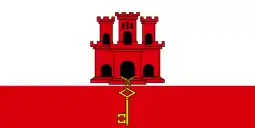 Lee Casciaro
Lee Casciaro Jake Gosling
Jake Gosling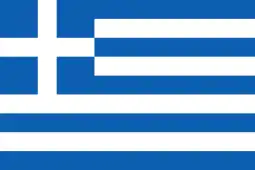 Christos Aravidis
Christos Aravidis Nikos Karelis
Nikos Karelis Panagiotis Kone
Panagiotis Kone Kostas Mitroglou
Kostas Mitroglou Sokratis Papastathopoulos
Sokratis Papastathopoulos Kostas Stafylidis
Kostas Stafylidis Panagiotis Tachtsidis
Panagiotis Tachtsidis Balázs Dzsudzsák
Balázs Dzsudzsák Zoltán Gera
Zoltán Gera Richárd Guzmics
Richárd Guzmics László Kleinheisler
László Kleinheisler Gergő Lovrencsics
Gergő Lovrencsics Zoltán Stieber
Zoltán Stieber Ádám Szalai
Ádám Szalai Jón Daði Böðvarsson
Jón Daði Böðvarsson Rúrik Gíslason
Rúrik Gíslason Eiður Guðjohnsen
Eiður Guðjohnsen Ragnar Sigurðsson
Ragnar Sigurðsson Moanes Dabour
Moanes Dabour Gil Vermouth
Gil Vermouth Leonardo Bonucci
Leonardo Bonucci Matteo Darmian
Matteo Darmian Daniele De Rossi
Daniele De Rossi Stephan El Shaarawy
Stephan El Shaarawy Alessandro Florenzi
Alessandro Florenzi Simone Zaza
Simone Zaza Rinat Abdulin
Rinat Abdulin Samat Smakov
Samat Smakov Aleksandrs Cauņa
Aleksandrs Cauņa Aleksejs Višņakovs
Aleksejs Višņakovs Artūrs Zjuzins
Artūrs Zjuzins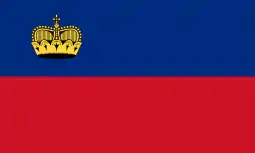 Franz Burgmeier
Franz Burgmeier Sandro Wieser
Sandro Wieser Deivydas Matulevičius
Deivydas Matulevičius Saulius Mikoliūnas
Saulius Mikoliūnas Lukas Spalvis
Lukas Spalvis Stefano Bensi
Stefano Bensi Mario Mutsch
Mario Mutsch Sébastien Thill
Sébastien Thill David Turpel
David Turpel Besart Abdurahimi
Besart Abdurahimi Arijan Ademi
Arijan Ademi Agim Ibraimi
Agim Ibraimi Adis Jahović
Adis Jahović Alfred Effiong
Alfred Effiong Clayton Failla
Clayton Failla Michael Mifsud
Michael Mifsud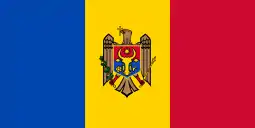 Gheorghe Boghiu
Gheorghe Boghiu Eugeniu Cebotaru
Eugeniu Cebotaru Alexandru Dedov
Alexandru Dedov Alexandru Epureanu
Alexandru Epureanu Dejan Damjanović
Dejan Damjanović Stefan Savić
Stefan Savić Žarko Tomašević
Žarko Tomašević Ibrahim Afellay
Ibrahim Afellay Jeffrey Bruma
Jeffrey Bruma Stefan de Vrij
Stefan de Vrij Luciano Narsingh
Luciano Narsingh Wesley Sneijder
Wesley Sneijder Craig Cathcart
Craig Cathcart Josh Magennis
Josh Magennis Niall McGinn
Niall McGinn Jamie Ward
Jamie Ward Jo Inge Berget
Jo Inge Berget Mats Møller Dæhli
Mats Møller Dæhli Tarik Elyounoussi
Tarik Elyounoussi Vegard Forren
Vegard Forren Markus Henriksen
Markus Henriksen Håvard Nielsen
Håvard Nielsen Håvard Nordtveit
Håvard Nordtveit Alexander Søderlund
Alexander Søderlund Jakub Błaszczykowski
Jakub Błaszczykowski Kamil Glik
Kamil Glik Bartosz Kapustka
Bartosz Kapustka Krzysztof Mączyński
Krzysztof Mączyński Sławomir Peszko
Sławomir Peszko Łukasz Szukała
Łukasz Szukała Ricardo Carvalho
Ricardo Carvalho Fábio Coentrão
Fábio Coentrão Nani
Nani Miguel Veloso
Miguel Veloso Robbie Brady
Robbie Brady Cyrus Christie
Cyrus Christie Wes Hoolahan
Wes Hoolahan John O'Shea
John O'Shea Ovidiu Hoban
Ovidiu Hoban Claudiu Keșerü
Claudiu Keșerü Ciprian Marica
Ciprian Marica Alexandru Maxim
Alexandru Maxim Raul Rusescu
Raul Rusescu Alan Dzagoev
Alan Dzagoev Sergei Ignashevich
Sergei Ignashevich Dmitri Kombarov
Dmitri Kombarov Oleg Kuzmin
Oleg Kuzmin Fyodor Smolov
Fyodor Smolov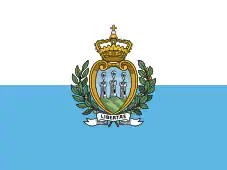 Matteo Vitaioli
Matteo Vitaioli Ikechi Anya
Ikechi Anya Chris Martin
Chris Martin James McArthur
James McArthur Matt Ritchie
Matt Ritchie Aleksandar Kolarov
Aleksandar Kolarov Nemanja Matić
Nemanja Matić Peter Pekarík
Peter Pekarík Kornel Saláta
Kornel Saláta Stanislav Šesták
Stanislav Šesták Miroslav Stoch
Miroslav Stoch Vladimír Weiss
Vladimír Weiss Robert Berić
Robert Berić Valter Birsa
Valter Birsa Branko Ilić
Branko Ilić Josip Iličić
Josip Iličić Kevin Kampl
Kevin Kampl Dejan Lazarević
Dejan Lazarević Andraž Struna
Andraž Struna Jordi Alba
Jordi Alba Juan Bernat
Juan Bernat Diego Costa
Diego Costa Andrés Iniesta
Andrés Iniesta Isco
Isco Mario Gaspar
Mario Gaspar Álvaro Morata
Álvaro Morata Sergio Ramos
Sergio Ramos Jimmy Durmaz
Jimmy Durmaz Emil Forsberg
Emil Forsberg Ola Toivonen
Ola Toivonen Eren Derdiyok
Eren Derdiyok Johan Djourou
Johan Djourou Blerim Džemaili
Blerim Džemaili Breel Embolo
Breel Embolo Gökhan Inler
Gökhan Inler Pajtim Kasami
Pajtim Kasami Michael Lang
Michael Lang Admir Mehmedi
Admir Mehmedi Valentin Stocker
Valentin Stocker Granit Xhaka
Granit Xhaka Serdar Aziz
Serdar Aziz Umut Bulut
Umut Bulut Hakan Çalhanoğlu
Hakan Çalhanoğlu Bilal Kısa
Bilal Kısa Oğuzhan Özyakup
Oğuzhan Özyakup Denys Harmash
Denys Harmash.svg.png.webp) David Cotterill
David Cotterill.svg.png.webp) Hal Robson-Kanu
Hal Robson-Kanu
1 own goal
 Mërgim Mavraj (against Armenia)
Mërgim Mavraj (against Armenia) Levon Hayrapetyan (against Serbia)
Levon Hayrapetyan (against Serbia) Kamo Hovhannisyan (against Albania)
Kamo Hovhannisyan (against Albania) Rashad Sadygov (against Croatia)
Rashad Sadygov (against Croatia) Alyaksandr Martynovich (against Ukraine)
Alyaksandr Martynovich (against Ukraine) Nikolay Bodurov (against Croatia)
Nikolay Bodurov (against Croatia) Yordan Minev (against Italy)
Yordan Minev (against Italy) Vedran Ćorluka (against Norway)
Vedran Ćorluka (against Norway) Dossa Júnior (against Andorra)
Dossa Júnior (against Andorra) Jordan Henderson (against Slovenia)
Jordan Henderson (against Slovenia) Ragnar Klavan (against Switzerland)
Ragnar Klavan (against Switzerland) Akaki Khubutia (against Scotland)
Akaki Khubutia (against Scotland) Mats Hummels (against Scotland)
Mats Hummels (against Scotland) Jordan Perez (against Republic of Ireland)
Jordan Perez (against Republic of Ireland) Yogan Santos (against Germany)
Yogan Santos (against Germany) Jón Daði Böðvarsson (against Czech Republic)
Jón Daði Böðvarsson (against Czech Republic) Giorgio Chiellini (against Azerbaijan)
Giorgio Chiellini (against Azerbaijan) Martin Büchel (against Russia)
Martin Büchel (against Russia) Franz Burgmeier (against Russia)
Franz Burgmeier (against Russia) Tome Pachovski (against Spain)
Tome Pachovski (against Spain) Petru Racu (against Montenegro)
Petru Racu (against Montenegro) Robin van Persie (against Czech Republic)
Robin van Persie (against Czech Republic) Markus Henriksen (against Hungary)
Markus Henriksen (against Hungary) John O'Shea (against Scotland)
John O'Shea (against Scotland) Cristian Brolli (against England)
Cristian Brolli (against England) Alessandro Della Valle (against England)
Alessandro Della Valle (against England)
2 own goals
 Giedrius Arlauskis (against England & Switzerland)
Giedrius Arlauskis (against England & Switzerland)
Branding
UEFA unveiled the branding for the qualifiers on 15 April 2013. It shows a national jersey inside a heart, and represents Europe, honour and ambition. The same branding was also used for the European qualifiers for the 2018 World Cup.[19]
Broadcasting
Notes
- The goal tally takes into account the original result of fixtures that were subsequently forfeited, not the awarded scoreline.
References
- "UEFA European Football Championship Final Tournament 2016: Tournament Requirements" (PDF). UEFA. June 2009. p. 3, sec. 3; p. 6, sec. 1. Retrieved 25 June 2012.
- "France beat Turkey and Italy to stage Euro 2016". British Broadcasting Corporation. 28 May 2010. Retrieved 25 June 2012.
- "Qualifying draw". UEFA.com. Retrieved 23 February 2014.
- "Nice to get the ball rolling for EURO 2016". UEFA.com. 13 December 2013.
- "European Championship – France 2016". Romanian Football Association. Archived from the original on 24 December 2013.
- "UEFA EURO 2016 regulations published". UEFA.com. 18 December 2013.
- "UEFA EURO 2016 qualifying format". UEFA.com.
- "Regulations of the UEFA European Football Championship 2014–16" (PDF). UEFA.com.
- "UEFA announces deals for European qualifiers". UEFA.org. 10 April 2013.
- "UEFA EURO 2016 qualifying draw procedure" (PDF). UEFA.com.
- "Pots announced for EURO qualifying draw". UEFA.com. 24 January 2014.
- "National Team Coefficients Overview" (PDF). UEFA.com. Retrieved 29 January 2014.
- "Croatia, Turkey qualify: how the groups ended". UEFA.com. 13 October 2015.
- "Play-off draw". UEFA.com. Retrieved 18 October 2015.
- "Sweden v Denmark highlight of play-off draw". UEFA.com. 18 October 2015.
- "EURO 2016 play-off draw seedings confirmed". UEFA. 14 October 2015. Retrieved 14 October 2015.
- "UEFA − National Team Coefficients Overview − Matches considered up to 14/10/2015" (PDF). UEFA.com.
- "Lewandowski equals Healy's scoring record". UEFA.com. 11 October 2015.
- "European qualifiers branding launched". UEFA. 15 April 2013. Retrieved 10 September 2014.
External links
| Wikimedia Commons has media related to Qualification for the 2016 UEFA European Championship. |
- UEFA Euro 2016 at UEFA.com
